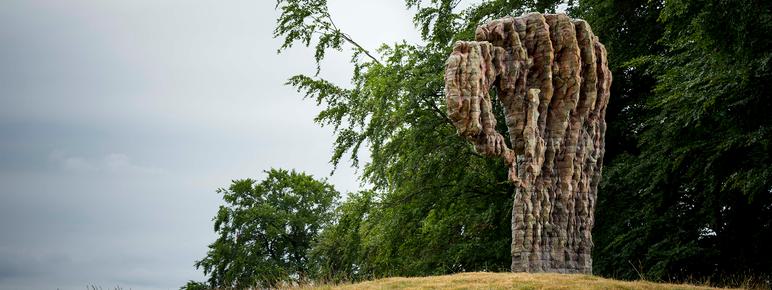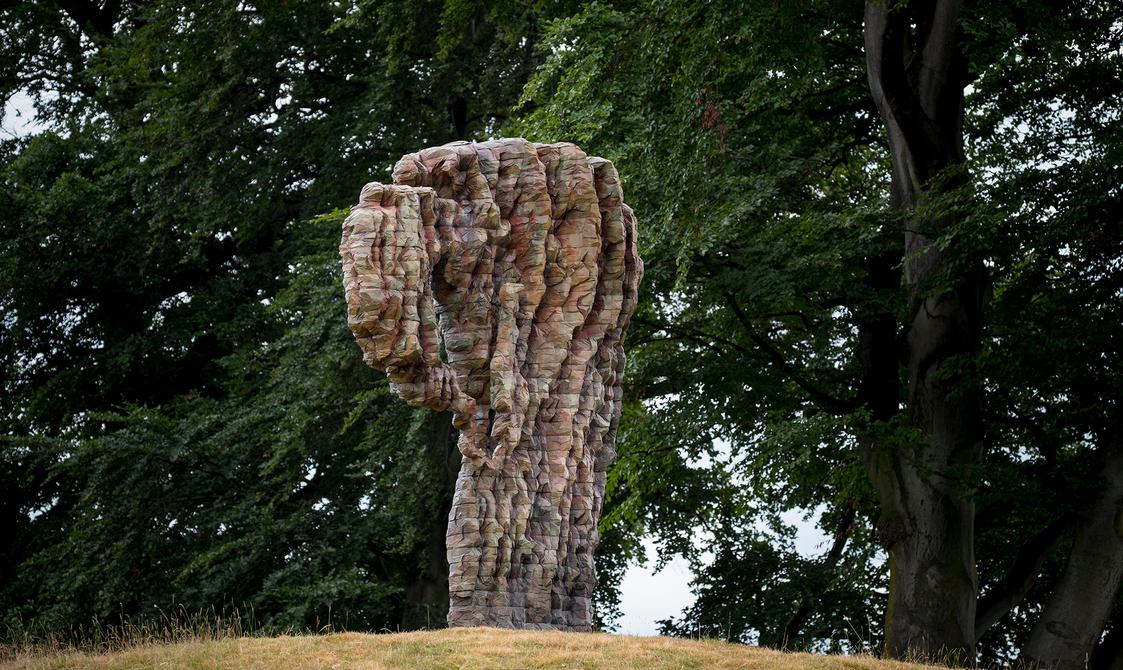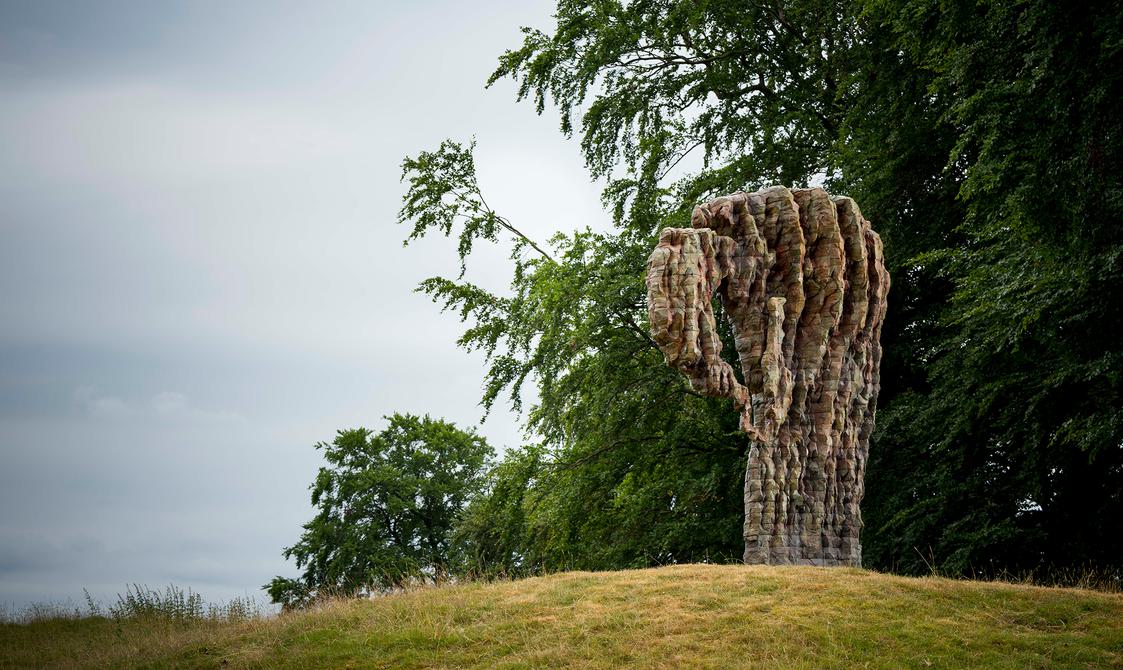
Ursula von Rydingsvard: Heart in Hand
Art Outdoors /Ursula von Rydingsvard: Heart in Hand
Heart in Hand relates to an earlier, larger work called Luba that was made in cedar and bronze, and is on permanent display at Storm King Art Center in upstate New York. Both works are intended to suggest a sense of protection and nurturing, like the arm of a mother cradling a baby. However, ambiguity is central to von Rydingsvard’s work and her forms are very open and evocative, relating to the body but equally to the natural, organic environment.
As with all of von Rydingsvard’s bronzes, Heart in Hand began life as a full-size cedar model, made to be cast, and the regular end sections of the milled cedar beams can be seen across the surface of the work. Both the wood’s grain and the incisions into it, that the she made with circular saws, can be clearly felt in the bronze. The artist has applied a rich patina to the surface, giving it earthy hues of greens, russets and browns giving the sense that it has been weathered by the elements over years.


You might also like
- Art Outdoors

Henry Moore: Upright Motives No. 1 (Glenkiln Cross): No 2; No 7
Moore created twelve Upright Motives in the mid 1950s. In their powerful symbolism these pieces owe much to the tall, upright stones, known as menhirs, from prehistoric times. Moore brought all these influences together to create forms which are unmistakably his own. - Art Outdoors

Andy Goldsworthy: Shadow Stone Fold
- Art Outdoors

James Turrell: Deer Shelter Skyspace
The Deer Shelter Skyspace creates a place of contemplation and revelation, harnessing the changing light of the Yorkshire sky. It allows us to take time to sit, to think, and to contemplate; an open invitation to access a peacefulness that is often denied in our busy lives that abound with technology and speed. - Art Outdoors

Jonathan Borofsky: Molecule Man 1+1+1